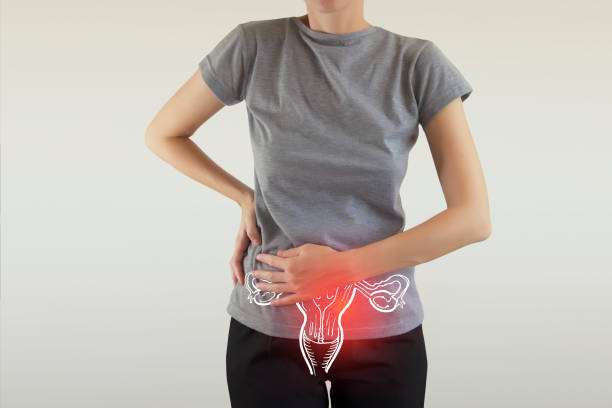Women represent the cornerstone of a family’s and a community’s overall health and well-being thus, ensuring they have access to quality care also can lead to improved health for children and families.
However, while we hear so much about gender equality, there are many issues affecting the health of women and girls which still remain “off-limits”. This stigma often causes women to ignore concerns about their health, while the fear of embarrassment can leave them suffering in silence.
Recently, the University of the Philippines (UP) – College of Medicine’s Mu Sigma Phi Medical Sorority under its Women Empowerment and Literacy through Health Education (WEALTH) program hosted a webinar that placed a spotlight on Kanser ng Kababaihan (Cancer in Women) – a perfect opportunity to talk about gynaecological health and raise awareness on cervical cancer.
Cervical cancer may be prevented by vaccines, yet in the Philippines it is still the second most common cancer next to breast cancer among Filipino women in 2020. Roughly, more than 7,000 new cases of and almost 4,000 deaths due to cervical cancer are expected to occur every year.
Cervical Cancer 101
Gynecological cancer is defined as any cancer that begins in a woman’s reproductive organs like cervix or within a woman’s pelvis which is the area below the stomach and in between hip bones, said Dr. Carolyn Z. Castro, a gynecologic oncology specialist who spoke during the webinar.
Since cancer is always named for the part of the body where it usually originates, cervical cancer, a type of gynecological cancer, is the term for cancer of the cervix which is the organ that connects the uterus to the vagina. Dr. Castro explained that “cervical cancer is commonly caused by human papillomavirus or HPV, a virus which is usually transmitted through sexual intercourse or skin-to- skin genital contact.”
Cervical cancer is by far the most common HPV-related disease. Nearly all cases of cervical cancer can be attributable to HPV infection. Although most HPV infections clear up on their own and most pre-cancerous lesions resolve spontaneously, there is a risk for all women that HPV infection may become chronic and pre-cancerous lesions may progress to invasive cervical cancer.
Sign and symptoms include vaginal bleeding, bleeding in between menstruation period cycle, bleeding after menopause, unpleasant vaginal discharge, pain during sexual intercourse, and having a hard time peeing. Later stages of the illness, as described by Dr. Castro, can show obvious symptoms on those infected like poor appetite, weight loss, fatigue, pelvic and back pain, swelling of the foot, heavy vaginal bleeding, and unpleasant discharge from the vagina.
In her presentation, Dr Castro also noted that other girls and women are also at risk of getting infected with the disease if:
- They had sexual intercourse as early as 14 years of age
- They have more than one (1) sexual partner
- Their partner has multiple partners and are sexually active
- They get infected with sexually transmitted diseases like Chlamydia and Herpes
- They have HIV infection
- They had early pregnancy
- They have given birth more than 3 times
- They’ve been using contraceptive pills for more than five (5) years
- They’re not having regular check-ups such as pap smear
- Having poor diet and weak immune system
- They’re smoking
Cervical Cancer may be Prevented!
But did you know that cervical cancer can be preventable? One of the most important things a woman can do to protect herself from cervical cancer is to have regular screening tests and be vaccinated against HPV early.
Screening methods for cervical cancer include pap smear and visual inspection with acetic acid (VIA), and HPV DNA testing. Since most cases of cervical cancer doesn’t show symptoms at early stages and it is usually at the later stages where it is detected, regular check-ups with a healthcare professional and screenings are highly recommended to keep oneself protected against the HPV- related disease.
On top of these preventive measures, Dr. Castro also shared some lifestyle advice such as sticking to only one partner to avoid HPV infection, avoid sexual promiscuity at early stages, proper use of condoms, avoid smoking, and most importantly, getting vaccinated against HPV as early as 9 years of age.
HPV vaccine may help prevent HPV types that cause cervical cancer as well as some cancers of the anus, vulva (area around the opening of the vagina), vagina, and oropharynx (back of throat including base of tongue and tonsils). It may also help provide protection against genital warts.
“Vaccines act as the body’s natural defenses to lower the chances of getting certain diseases, as well as suffering complications due to the diseases. This means that getting vaccinated with HPV vaccine will lower risk for girls and women to be infected with cervical cancer,” said Dr. Rowena Raymundo, an OB-Gyne Infectious Disease specialist who also joined the webinar discussion.
According to Dr. Raymundo, women may be vulnerable to sexually transmitted infections for both biological and socio-economic reasons. She further explained that the social and economic dependency of some women can limit their capacity to negotiate safer sex or refuse unsafe sex which makes them at high risk of being infected with HPV. That is why the continuous awareness campaign on cervical cancer is necessary so that girls and women, especially the vulnerable ones, can be capacitated to protect themselves from the disease.
The Department of Health (DOH)’s expanded program on immunization includes provision of necessary vaccines needed from birth up to 18 years of age. “This means by the time we are adults we should have received the basic mandatory immunizations against tuberculosis, diptheria, tetanus and pertussis, poliomyelitis, measles, mumps, rubella, hepatitis A & B, Influenza, pneumococcal virus, rotavirus, Japanese encephalitis, chickenpox, and Human Papillomavirus as part of childhood immunization,” said Dr. Raymundo.
Due to the COVID-19 pandemic which suspended face-to-face classes, the conduct of school-based immunization services has been temporarily put on hold. However, the Department of Health continues the recommended vaccination against HPV among the female population aged 9-14 years old through community-based immunization program.
In educating one another, being proactive and supporting each other accompanied by a healthy lifestyle, regular check-ups with your physician, and being up to date with one’s vaccination, each of us may help in preventing, lessening, and soon, eliminating cervical cancer. To learn more about the disease, you can watch the whole webinar series here.
ADVT















































